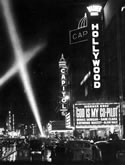THE ART OF PITCHING

Make no mistake; pitching is an art. Every screenplay begins with an idea and if you want to write a screenplay based on your idea, then the chances are you’re going to have to pitch it to someone; it could be a producer, a director, a production executive, an agent or anyone in the business.
A pitch is nothing more than a verbal presentation of a notion, concept, situation, idea, or story. It can be augmented with photographs, casting suggestions, newspaper articles, clippings, or anything else that will help you in the “selling” of your idea.
When we talk about pitching, we’re talking about the presentation of an idea. That means it’s your responsibility to convince a production executive (s), or agent, or producer, whoever it might be, that your idea is so good, so unique, so hip, that they want to develop it into a screenplay and pay you for doing it.
When you pitch, you’ve got to remember that you’re pitching story, and while character and action may be the glue that holds everything together, it all starts within the context of story.
In any pitch meeting you’ve got about 15 or 20 minutes to do your stuff. That means knowing the key structural points of your story. How you’re setting up the story, who the story’s about, the changes that he or she goes through; in other words, what is it about your story that will make an audience plunk down the cost of admission to see your movie.
 Before you even begin to present your idea, your story line needs to be structured into the key elements from beginning to end. It means knowing the personalities and intricacies of your characters. It means rehearsing your presentation so the person you’re pitching is hanging on every word. It’s your job to keep the listener, the buyer in this case, perched on the edge of his or her seat.
Before you even begin to present your idea, your story line needs to be structured into the key elements from beginning to end. It means knowing the personalities and intricacies of your characters. It means rehearsing your presentation so the person you’re pitching is hanging on every word. It’s your job to keep the listener, the buyer in this case, perched on the edge of his or her seat.
Your idea must be presented with passion, clarity and confidence. You need to know the beginning, middle and end of your story. Can you name three actors or actresses who could play the lead? Two or three directors who you think would respond to the material. Can you reference your idea with a few movies that have been successful, including the amount of monies those films have grossed. These are valuable aids in the pitching process.
What do studio executives look for in a pitch? That’s a question I posed to several top film executives and they all agreed; they want to hear something interesting, something they can turn around and sell. So your manner of presentation, your attitude, even the clothes you’re wearing, goes into the whole package of what makes a good pitch.
One executive shared that “when a writer pitches me, I’m always thinking – would I want to see this movie? Is it different than anything I’ve seen before, or is it the same old thing only with a slight twist? I want to see something original, not a variation on a film that’s already out there. I want to see how well the story is worked out. Does the writer know their material cold and, most importantly, is he or she really committed to it. Don’t think you’re going to sell something to me that you’re not committed to, no matter what, because I can smell it. Then I say to myself, if they’re not committed to it, how can I be? I look for someone who believes in what they’re saying.”
Words to think about.
Nobody is immune to the pitching process. Writers pitch to executives. Executives pitch their executive team. Then to the head of production. Then the head of production has to pitch to the CEO. And, so it goes.
 What does a “normal” pitching session look like?
What does a “normal” pitching session look like?
“Fifteen or twenty minutes,” says one studio executive. “That’s the longest. I have writers come in who are wonderful, and they go on and on for forty-five minutes. Sometimes I just cut it short because it’s obvious they’re rambling. Pitching is the style of presentation; you have to win someone over with the energy and theatrics of it.”
In a typical pitch meeting you’ll schmooze for a few minutes while waiting for an opportunity to say I’d like to tell you about my idea. Then introduce the idea by telling a few lines about the overview of the story. For example, this is a story about a private detective who’s hired by the wife of a prominent man to find out who he’s having an affair with. In the process, he becomes involved in several murders and uncovers a major water scandal. That’s how the pitch for Chinatown began.
Once you’ve got your opening three-sentence story line, you can establish the structural dynamics of the story; the beginning, middle and end. Plot Point I and Plot Point II. Design your story line in a way the executive can “see” the story. Now, what’s the resolution of the story? Not the specific scene or shot, but the solution; does your character live or die, succeed or fail, win the race or not, get married or not? Perhaps the executive will suggest another ending – what do you do then? Can you get behind it?
Remember, a good pitch is something that gets bought. To walk out of that room and say, that was a great pitch meeting, and then they pass on your project, what does that do?
So, here’s some key reminder points from a top production executive at a major motion picture company:
- Pitching Etiquette – be on time and be prepared to wait.
- Impress your audience – you’re hoping to start a business relationship. So, dress appropriately, prepare your presentation, and look for any pitching aids, like photographs.
- See if you can read your audience.
- Things to expect and anticipate – the executive on the other side of the desk taking phone calls during your pitch, or having several other execs in the room, etc.).
- First impressions…what’s the best way to handle the introduction (including the all-important pitch on who you are, and what your background is).
- Improvisation – what do you do when you fumble the pitch – how do you recover? .
- When the exec’s eyes glaze over, are you ready to move to “Plan B.” Or, “What else do you have?”
- “The leave behind” – a one or two page summary – setting up the follow up time to call….
To summarize: The executive looks for a “great idea.” Think about the passion and manner of your presentation. Your writing ability always comes in second. Everybody’s a buyer and seller in Hollywood. It is the Town of Sell, built on a foundation of hype, fear, greed, insecurity and ego. Pitching something just because you think it’s commercial is a real trap. The trick is to find a commercial idea that you really want to write; not because it’s commercial, but because you love the idea.
Yes, pitching is an art. How well you do it depends upon two things: the idea behind your screenplay and how well you present it.
Good luck.



Comments are closed.